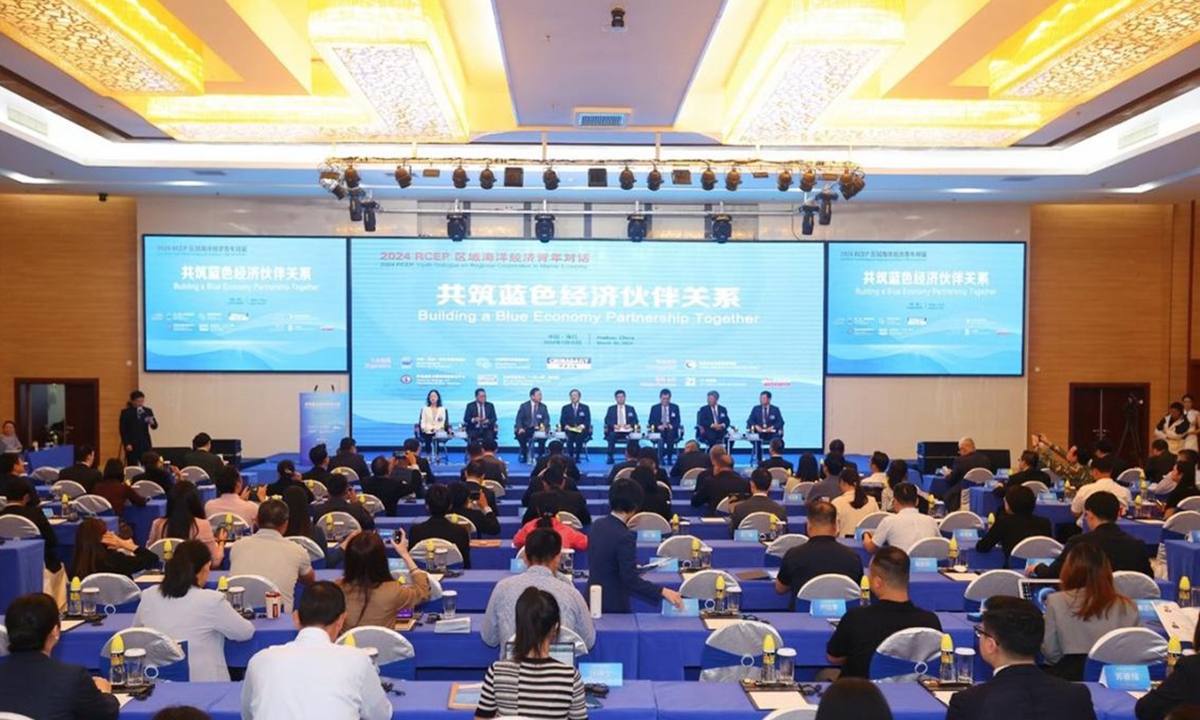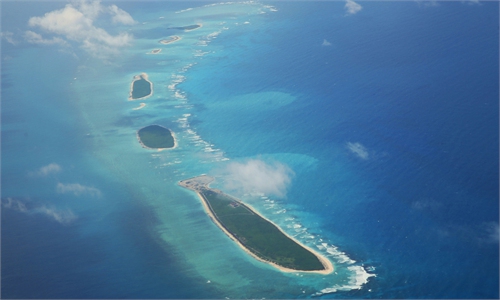Promoting integration of China-ASEAN blue economy to advance regional cooperation

The forum, "Building a Blue Economy Partnership Together: 2024 RCEP Youth Dialogue on Regional Cooperation in Marine Economy," is held in Haikou, South China's Hainan Province, on March 30, 2024. Photo: China Institute for Reform and Development (CIRD)
Currently, building the China-ASEAN blue economy partnership has become a major priority for their comprehensive strategic cooperation. Some studies suggest that if China and ASEAN invest $2 trillion to $3.7 trillion in the blue economy from 2020 to 2050, it could generate net benefits of $8.2 trillion to $22.8 trillion, with a return on investment of 450 percent to 615 percent. Promoting integration of the blue economy has become a significant choice for China and ASEAN's joint efforts to build a regional economic growth center.Faced with the increasing challenges of maritime cooperation governance, pragmatically promoting China-ASEAN blue economy integration is not only a key measure to maintain the security and stability of regional industrial and supply chains. It will also create important conditions for realizing China and ASEAN's shared objective to drive their maritime governance cooperation with economic cooperation.
China-ASEAN economic and trade cooperation on the whole has been mainly focused on land space, and the problem of cooperation fragmentation in maritime issues has become rather prominent. Therefore, there is an urgent need for China and ASEAN to shift the focus of their economic and trade cooperation from "land to sea" and to form an integrated cooperation framework.
In 2016, the China Institute for Reform and Development (CIRD) proposed the concept of a "Pan-South China Sea Economic Cooperation Circle," aiming to build a Pan-South China Sea marine economy cooperation-themed free trade area. If cooperation barriers can be broken down with the goal of integrating the blue economy to form free trade networks, it will release important dividends of regional economic growth and inject "blue momentum" into regional economic integration.
To promote the integration of China-ASEAN marine industries, efforts can be made in five areas.
First, we should push forward the integration of the marine fishery industry. This can be done, it is been suggested, by leveraging the significantly favorable conditions the Regional Comprehensive Economic Partnership (RCEP) has brought along in order to jointly establish marine product, industrial, and supply chains.
Second, we can push forward the integrated cooperative development of offshore renewable energy resources. In 2021, renewable energy accounted for 14.4 percent of the total energy supply in ASEAN countries. As one of the main investors in ASEAN's energy sector, China will provide significant support for ASEAN to achieve its goal of renewable energy proportion.
Third, promoting integration can be considered to push forward the integration of high-tech marine industries with marine biomedicine as a priority.
Fourth, strengthening cooperation in port infrastructure construction, jointly building China-ASEAN port alliances, collaboratively pushing forward the digital transformation of ports, and mutual recognition of standards will in turn push forward the integration of China-ASEAN marine infrastructure.
Fifth, we can promote the integrated development of the China-ASEAN marine tourism economy through advancing multilateral cooperation in marine tourism, promoting investment in marine tourism based on RCEP rules, and collaboratively enhancing the level of freedom and convenience for tourists to enter and exit.
Hainan is an "oasis" in the blue ocean. The construction of the Hainan Free Trade Port aims to fully leverage its advantages of unique geographical location, resources and environment, as well as high-level opening-up policies, to play an important role in the integration of the China-ASEAN blue economy.
The blue economy is a future economy, an open economy and a cooperative economy. In the face of the blue economy era that sees greater emphasis and dependence on maritime cooperation, pragmatically advancing the integration of the China-ASEAN blue economy not only helps unleash the potential of blue economy cooperation, but also injects new vitality into regional economic integration. Not only will it help promote the construction of blue economy partnerships, but it will also have a significant impact on the comprehensive strategic cooperation between China and ASEAN.
The author is the president of China Institute for Reform and Development. opinion@globaltimes.com.cn


